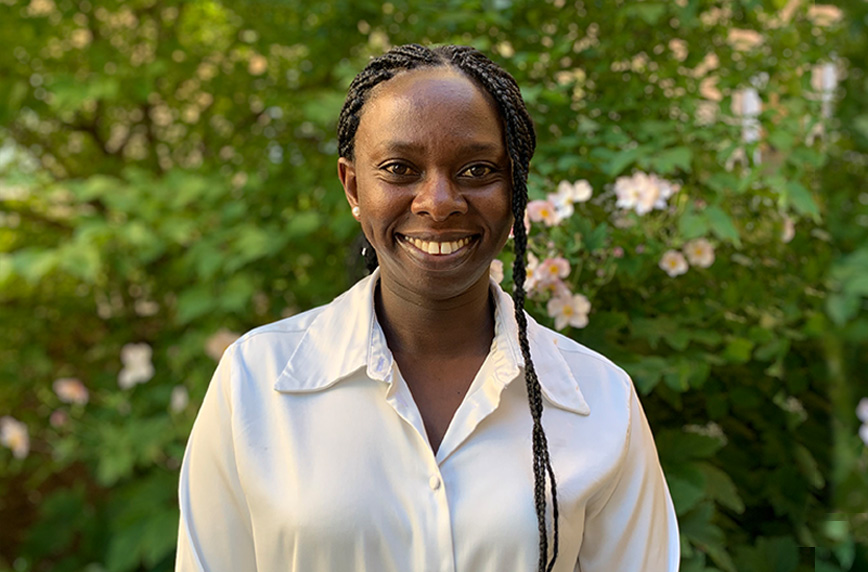Henriette
Henriette is from Rwanda, a small and beautiful country in the heart of Africa. She completed her bachelor’s degree in Civil engineering at the University of Dar es Salaam/Tanzania. Since then, she moved to Sweden and KTH Royal Institute of Technology to study the Environmental Engineering and Sustainable Infrastructure (EESI) programme. In her free time, she likes reading self-help books, seeing the magic in the flowers blooming, gardening and jogging.

Why did you choose this master’s programme at KTH?
I believe one’s future is very vital and should be taken seriously. I have chosen Environmental Engineering and Sustainable Infrastructure to enhance and participate in taking care of our globe. With my civil engineering background, I believe that this master’s programme would be the perfect tool to reach the development of sustainable infrastructure, as well as a sustainable environment.
How do studies at KTH differ from your previous studies?
At KTH, every course is taught in a practical manner. It differs from my previous studies since, at KTH, at the end of each lesson, you can really understand the contents of the subject and easily see where and how you can apply that knowledge in your professional life. I like how the assignments reflect real-life situations, and several guest lecturers from outside the university share what’s going on in their everyday projects related to our courses.
How is student life in Stockholm?
I like that Stockholm is like an island and that I can enjoy the waterfront by walking or jogging from my apartment. I enjoy watching the waves of the water during my break time and looking at the blue-green landscape of Stockholm. I find myself full of energy for the following academic duties. I like how well connected the public transport is anywhere in Stockholm, making each trip as easy as in the city and surrounding areas. This helps to explore much of Stockholm’s history and Sweden in general. Stockholm’s roads have enough walkways and bicycle lanes which increases the mobility modes and city enjoyment.
How would you describe your time at KTH so far?
As of now, I have completed my first year of studies, and I can say that it’s the first time that I have enjoyed life as a student. Studies may indeed be challenging in one way or another, but in the end, I feel so proud of myself for accomplishing this milestone and looking forward to the second year of studies. KTH offers many social activities, and it is rare to get bored during the semester. At KTH, there are many labs, making a more practical study environment. Many green spaces are located near the beautiful park called Norra Djurgåden. However, in winter, it may be more difficult, especially for international students from tropical climate countries, since it gets dark earlier and the sun rises late in the morning, making it hard to wake up in the morning. To cope with this, I have been doing indoor workouts to make my body active, and it worked for me.
What do you want to do after graduating?
Water is life! My dream job is to work in the water sector. I want to work as a water engineer, dealing with drinking water or a wastewater treatment plant. I desire to be part of a team who will quench people's thirst by supplying good quality drinking water to residential houses and industries. My second dream job is working in the management of natural resources and dealing with the balance of ecological systems by assessing the potential risks of pollution and providing measures to prevent or remediate polluted resources like water or soil.
What would you like to say to students thinking of choosing KTH for master’s studies?
I would say that choosing KTH would be the best decision, and I assure you that you will not regret it. With KTH’s master’s studies, you can surely draw the way to professional life and get a complete package of knowledge, which I believe is the best foundation to build one’s career after school.
